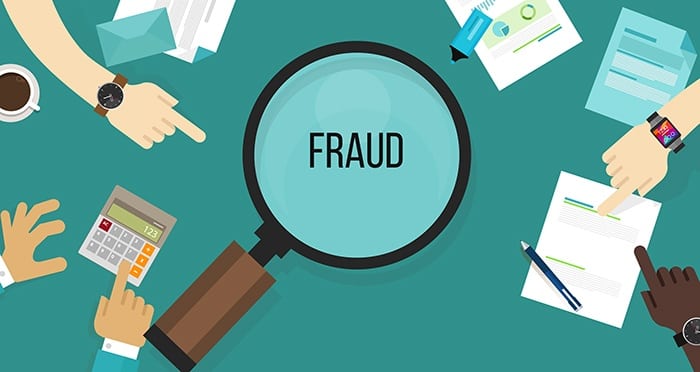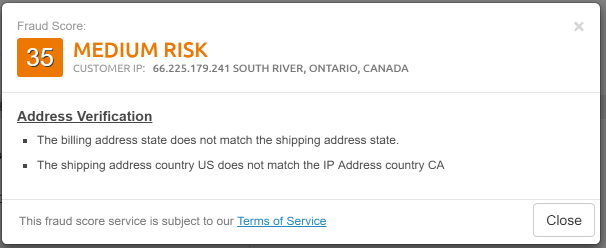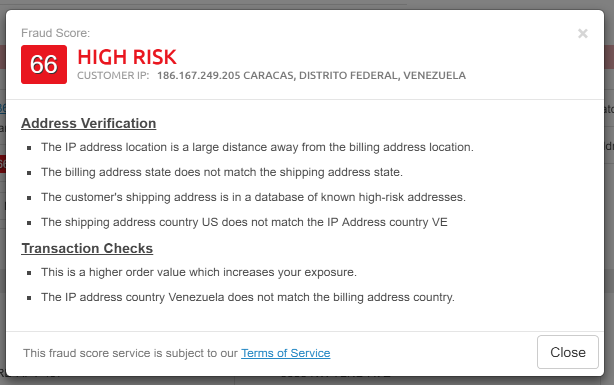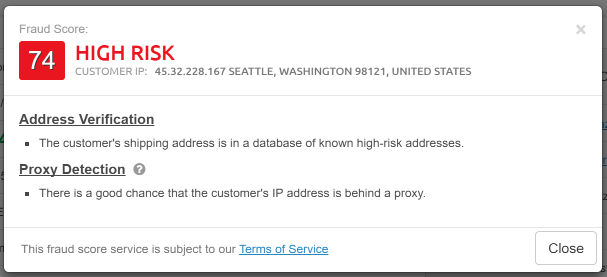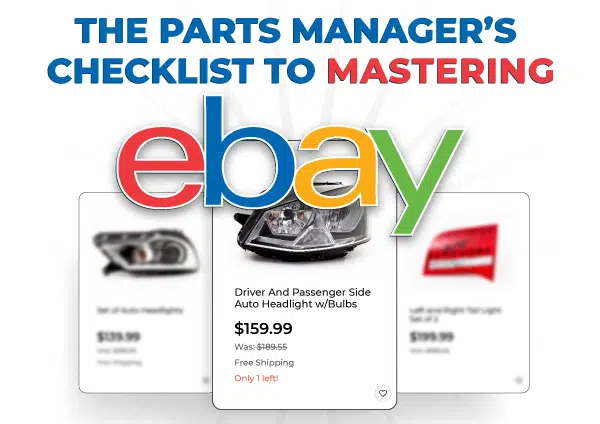Dealing with fraud can be any parts department’s nightmare. With expensive parts that are heavy with high-cost shipping, fraudulent orders can incur huge losses for your dealership. At the same time, refusing to sell to genuine customers that happen to raise a lot of fraud red flags can cost you sales and customers.
It’s a tough line to balance. Some dealerships will play it safe and refuse business to someone based on a fraud score. And while you need to be careful about who you sell to, sometimes those fraud scores don’t tell the whole truth about a customer.
Listed below, we’ve found 5 buyers that showed up as risky on our RevolutionParts fraud detector. Except in each of these cases, the order went through without a hiccup and weeks or months later, the charge was never disputed.
1. Medium-Low Risk at 35/100
To start off in our analysis of these fraud examples, here’s a simple one. A score of 35 usually isn’t something to worry about, but you should still look into each of these orders just to see what the problem is.
In this case, the fraud detector picked up on something simple. Their billing address is different than the shipping address—in fact, one is in Canada while the other is in the US. The fraud detector also tells us that the shipping address doesn’t match the IP address, which is again, in Canada. Overall it looks like someone in Canada made and paid for the order and shipped it to someone in the US.
Typically, fraudsters try to place expensive orders to squeeze as much out of their stolen information as possible. In this case, the buyer’s purchase was relatively inexpensive—less than $40 after shipping, which can help their case in the eyes of your dealership.
In addition, the last names on the billing and shipping addresses are the same. Of course, a fraudster could be lying about name, but it can still help you imagine a situation in which a man living in Canada is buying auto parts for his brother in the US.
2. Medium Risk at 46/100
International orders typically raise red flags to begin with, so this buyer was doomed to raise some flags with a Colombian IP address, especially since it did not match the US shipping address. Mismatching IP addresses can be a powerful indicator of fraud, so that’s part of why the fraud indicator ranked this order so high.
However, a human eye can give a more in-depth view of this buyer. For example, the RevolutionParts system will show dealerships if that particular customer has shopped with them in the past.
Using that feature we can see that this person has actually completed multiple orders in the past without any issues. Their past orders have a range of risk levels (some high, some medium, some low), so their situation, whatever it may be, changes often. The fact that they are a regular customer should put you at ease about fulfilling the order with them.
3. Moderate High Risk at 66/100
Once again, we have a buyer with a foreign IP address. Worse, the shipping address seems to be in a high-risk part of town and doesn’t correlate with the billing address. This makes for a higher-risk order than the previous example.
Again, however, the situation is similar. By navigating through the order details page, we find that this particular buyer has made multiple problem-free orders over a course of 7 months. Furthermore, their contact information (such as email and phone) looks legitimate so you can call them at any time to confirm their identity.
4. High Risk at 74/100
The list of red flags on this example seems a lot shorter than the one above, and yet the risk is higher. What gives?
Our fraud detector noticed that the customer’s IP address is being hidden by a proxy. While there are many honest reasons an individual might use a proxy, many people use it for shady purposes, too. This single bullet point for “Proxy Detection” carries a lot of weight in determining a fraud score.
Luckily, however, the customer provided legitimate email and phone numbers. When an order looks suspicious, it’s always a good idea to call the customer and confirm their identity.
Sometimes you can also check the items being purchased to see if they make sense together. In this case, the customer was buying brakes and brake pads—two items bought together all the time. This can indicate to you that their need for parts is genuine, and give more authenticity to their order as a result.
Human eyes can check for part compatibility with much more ease than a computer, so it’s something you can do to put your mind at ease.
5. High Risk at 86/100
Over 80 points on the fraud detector is starting to look really suspicious, but perhaps we shouldn’t jump to conclusions.
A request for expedited shipping is incredibly common among cases of fraud, because fraudsters want to receive the parts before their inauthenticity is detected. You should be especially suspicious when expedited shipping is paired with a high order value shipment.
The RevolutionParts fraud detector makes it easy to look up the customer shipping address in Google Maps. If you go into Street View only to see that their “address” is a hotel or an empty field, then you know something’s wrong. The customer in the example listed their address as an auto repair shop, which makes sense.
Sometimes dealers put an order on hold until they can confirm authenticity. This is fine as long as you contact the customer and let them know. If you still can’t safely decide if an order is fraud, don’t be afraid to cancel it!
Conclusion
Even using these tricks, you should always contact the customer for cases of high risk. High-price orders with expedited shipping are a sign of fraud in 99% of cases, so don’t take this example as an excuse to ignore these warning signs.
It’s not impossible to avoid online fraud as long as you know what steps you can take to reduce your chances. At the same time, customers can have a unique situation that makes their order seem fraudulent when it’s actually not. When an order shows a high fraud risk score, take a minute to analyze the details before you refuse to sell.
Immediately labeling a suspicious order as fraud can cost you a good sale when the customer ends up as genuine. By labeling them as a fraudster when they’re not, you not only lose the sale but also that customer—forever. It doesn’t take long to call or send an email, and performing a few checks can go a long way in putting your mind at ease.
